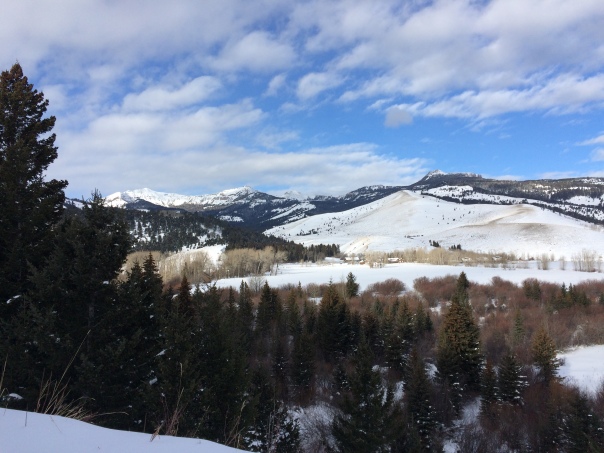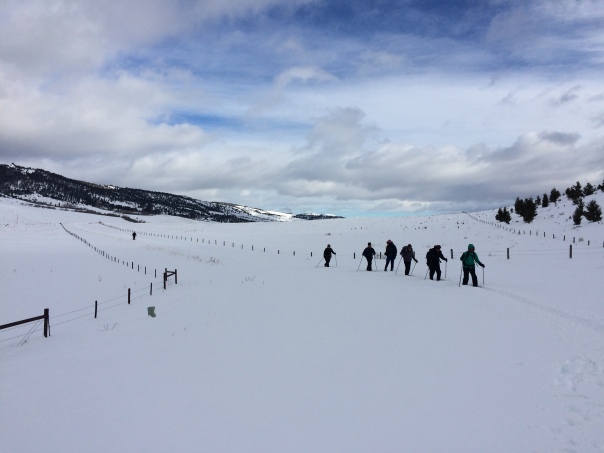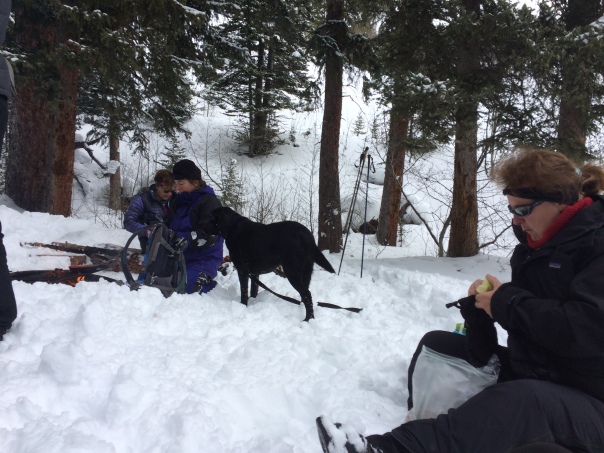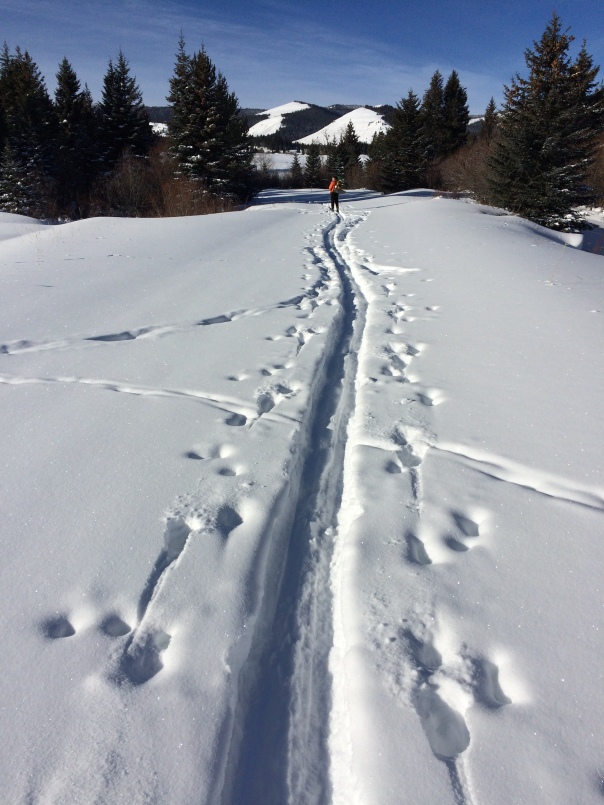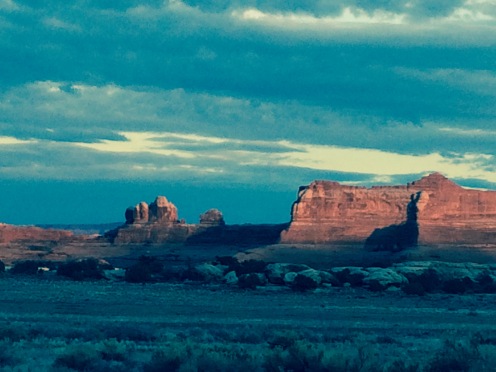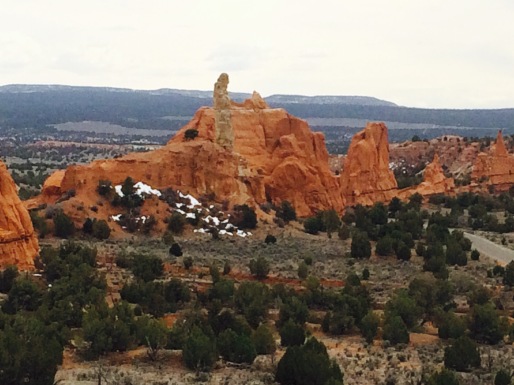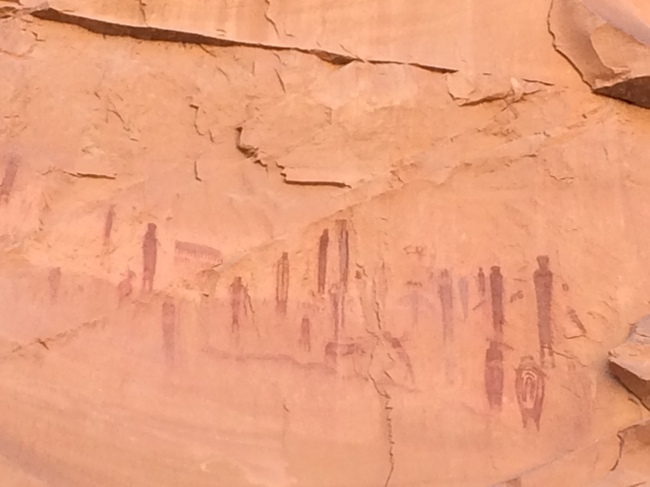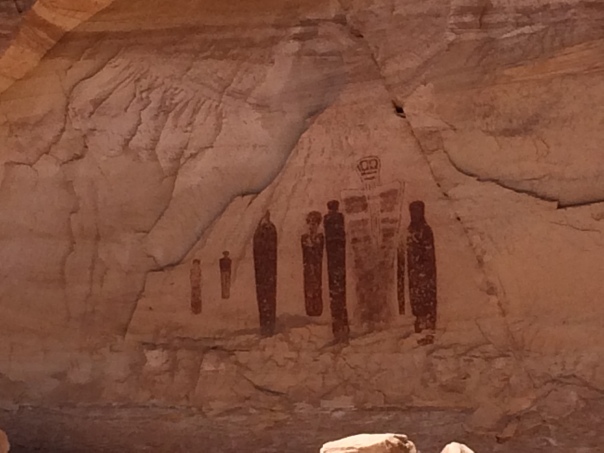A few months ago, I wrote the following piece for another blog, Writing the Wild, that I share with other women. I publish it here for those who may not follow Writing the Wild.
 “Riding over Marston Pass, the view was so huge, so empty yet full, that it was unsettling. My eyes travelled outward—as far as I could see were jagged peaks, rounded mountains, flat-topped buttes and wide valleys below.” Julianne Baker
“Riding over Marston Pass, the view was so huge, so empty yet full, that it was unsettling. My eyes travelled outward—as far as I could see were jagged peaks, rounded mountains, flat-topped buttes and wide valleys below.” Julianne Baker
Awe:
1 a feeling of reverential respect mixed with fear or wonder.
2 an overwhelming feeling of reverence, admiration, fear, etc., produced by that which is grand, sublime, extremely powerful, or the like
3 an emotion variously combining dread, veneration, and wonder that is inspired by authority or by the sacred or sublime
4 a feeling of great respect, usually mixed with fear or surprise

From Merriam-Webster to the Oxford English Dictionary, to Dictionary.com, official definitions of the word awe include the word fear or dread. But in this present day, is awe always combined with fear?
Recently I ran across an article on the feeling of awe. (Link) I shared it with friends, which sparked thoughtful discussions. As we wrote, talked, and thought about what awe means to us, my mind’s eye returned to the view over Marston Pass. I remembered feeling small, but not afraid. I remembered feeling unimportant, humbled by the beauty and vastness of what I was seeing, of where I was. I did not use the word ‘awe’ in my description, but that is was I felt. I like that feeling of unimportance. It grounds me in my human-ness. Awe brings me out of my inner mind where thoughts can be larger than life. Awe sets me right down in the here and now.

What is awe? What is that feeling of awe, and what does it do for us? More importantly, what makes each of us feel awe? And what emotions do we associate with it? Fear? Anxiety? Gratitude? Inspiration?
On Facebook we questioned : “Do you find your awe connected to fear? I’d say most of the time I do not. However, I think some people like the awe and fear cocktail… Because it produces adrenalin. “
Another reported: “For me, awe can be either fear or the closest I come to believing in a god. The difference between coming face to face with a chest-beating Lowland Gorilla in West Africa, or watching a 16 year-old champion gymnast, or seeing the sunrise on Torres del Paine.”
Another:” the natural world does it for me every time, no question. A great painting doesn’t, but I wonder if that’s because I’m not a painter. I’m impressed, but not necessarily gaga.”
Which led us to differ between art and nature: “…amazed at and humbled by another’s abilities vs. completely awestruck by light in Antelope Canyon or a sheer rockface thousands of feet tall. “
Each person who commented referenced a passion. Another friend recently wrote about flying—he was a pilot: “One thing this type of awe shares with nature is the humbling aspect. I was humbled by the capability of the jets I flew. I stand in awe of the perfection of evolution, this type of awe I guess I would put in the category of wonder”.
Most of us described awe as emanating from their heart or center, radiating outward. Some described it as happening when something unexpected was experienced, as simple as a feather next to the trail.
I’ve begun to think that awe is a very personal thing and can be cultivated. In fact, it should be cultivated. For me, the natural world inspires awe. For me, awe is a feeling of being humbled by the natural beauty around me. Awe connects me to myself and to my surroundings. Awe makes me grateful to be alive. My awe seems to be a combination of wonder, humility, amazement, unimportance, connection and gratitude.
Awesustains me. It is life at its most intense. Many of my strongest memories have at least a tinge of awe:
The view of Electric Peak, covered in new snow after a September storm.

The view from the top of the Grand Teton on a sunny August afternoon, and the view looking back up at the Grand after descending from the summit.

Watching a cinnamon colored black bear nip the tops of yellow flowers, close enough that I could see his incisors through my binoculars.
Having lunch on the shore of Turbid Lake in the backcountry, then looking up to see two wolves come down to the opposite shore.
Hearing wolf howls at midnight while backpacking on the Mirror Plateau.
Seeing a grizzly bear searching for moths on the rocky slope of Younts Peak.
Watching a cow elk urge her newborn calf to its feet in Hayden Valley.
Finding and holding an obsidian point which fit perfectly in the palm of my hand, as a golden eagle flew overhead.

Watching the beauty of a rainbow over Lamar Valley after a summer rainstorm.
Standing thigh deep in Slough Creek, concentrating on laying the fly just right on the water, then looking up to see a bald eagle fly at eye level, a bison lying on the bank of the stream 20 yards away, and 5 mergansers swim around the corner.

The first time I felt awe, that I can remember, was my first view of the Colorado Rocky Mountains. I was young then, and was unimpressed by the familiar landscapes of my childhood in the Midwest. The jagged snowy peaks, the fresh cool air, the night stars that seemed to be only an arm’s length away, the red and yellows and blues of meadow flowers—these were new. These made me open my mouth in wonder. I have continued to seek out that sense of wonder, that feeling of humility. These days, more and more experiences evoke awe. Perhaps it is a function of having more knowledge. Or maybe the awareness of how little I know and how ephemeral this life is. In the end, it does not matter. All that matters is that I search out experiences that continue to inspire me to feel awe.

“Awe sneaks up on us like love. We surrender to the ecstatic outpouring of life before us.” Terry Tempest Williams
What makes you feel awe? What other emotions are connected to awe for you? I would love to read your thoughts! Please leave your comments below. Thank you.
